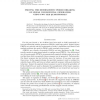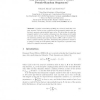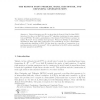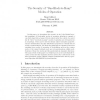247 search results - page 17 / 50 » On Pseudorandom Generators in NC |
MOC
2002
13 years 7 months ago
2002
We describe the design of a family of aperiodic PRNGs (APRNGs). We show how a one-dimensional two tile cut and project quasicrystal (2TQC) used in conjunction with LCGs in an APRNG...
CRYPTO
2003
Springer
14 years 22 days ago
2003
Springer
We give two applications of Nisan–Wigderson-type (“non-cryptographic”) pseudorandom generators in cryptography. Specifically, assuming the existence of an appropriate NW-ty...
ICANN
2005
Springer
14 years 1 months ago
2005
Springer
Abstract. Dynamic neural filters (DNFs) are recurrent networks of binary neurons. Under proper conditions of their synaptic matrix they are known to generate exponentially large c...
STACS
2010
Springer
14 years 2 months ago
2010
Springer
Using ε-bias spaces over F2, we show that the Remote Point Problem (RPP), introduced by Alon et al [APY09], has an NC2 algorithm (achieving the same parameters as [APY09]). We stu...
FSE
2003
Springer
14 years 21 days ago
2003
Springer
In this paper, we investigate the security, in the Luby-Rackoff security paradigm, of blockcipher modes of operation allowing to expand a one-block input into a longer t-block ou...




